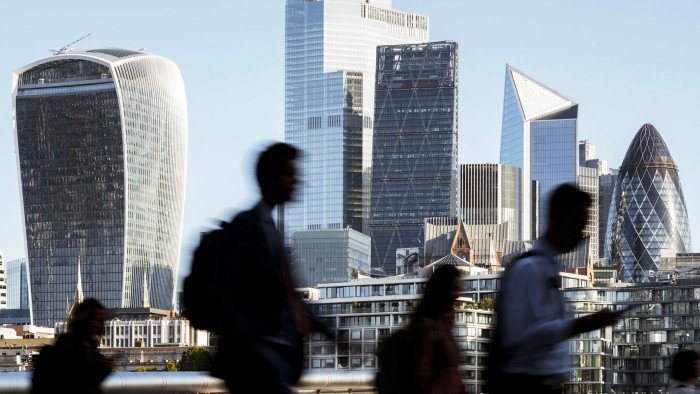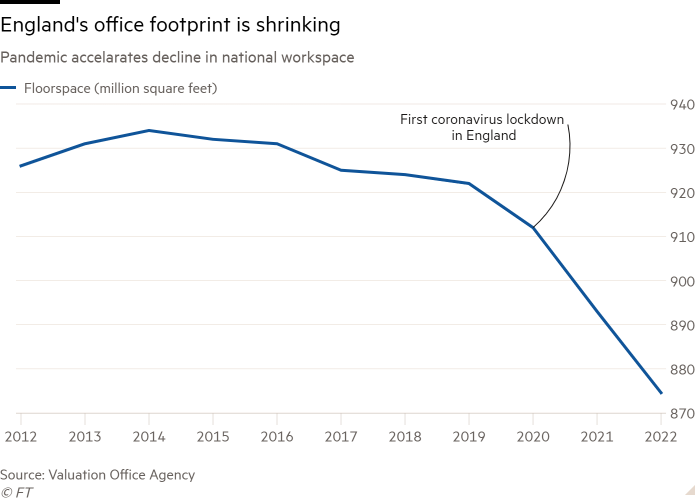Office space shrinks by millions of square feet in England

Roula Khalaf, Editor of the FT, selects her favourite stories in this weekly newsletter.
The amount of office space in England has plunged by millions of square feet during the pandemic and is expected to continue falling, with workplaces languishing empty and questions about the future of work unresolved.
The contraction is part of a big shake-up of English offices, which developers are under pressure to make more flexible and greener in response to shifting work patterns and a rising tide of environmental regulation.
The amount of office space in England fell 2 per cent in the 12 months to March 31 last year, according to data from the Valuation Office Agency, part of HM Revenue & Customs.
That represents a fall of more than 18m sq ft in the period — roughly 35 times the floorspace in the Gherkin office building in the City of London, or almost 15 times that in 22 Bishopsgate, the largest office building completed in the capital during the pandemic.
The VOA data showed a significant shrinkage in the national office footprint in the year after coronavirus first swept the UK, triggering a national lockdown. The fall came in part because construction work ground to a halt during that initial lockdown.

Developers have remained wary since, with occupancy levels staying stubbornly low. Having recently edged above 20 per cent, average occupancy levels in the UK plummeted to about 10 per cent in England in the week before Christmas as new coronavirus restrictions were brought in, according to Remit Consulting, a data company.
Property analysts said the amount of space available was likely to have fallen further since March, with employers and developers anticipating a more flexible future of work, in which less space would be needed to accommodate an equivalent workforce.
“Our view is we don’t need as much office space in the UK or anywhere else if high levels of agile working remain . . . it’s reasonable to say this [reduction in space] is a trend going forward and a trend that needs to happen,” said Mat Oakley, head of European commercial property research at real estate company Savills.
The company forecast that flexible working would persist beyond the pandemic, making as many as one in 10 offices surplus to requirements in five years’ time. That was likely to push older offices, which no longer met the demands of a modern employer or stringent environmental standards, into redundancy, said Oakley.
“Some stock is no longer fit for purpose; in some places it isn’t viable to make it fit for purpose,” he said.
The drop in office space was more pronounced in smaller cities and away from central business districts, according to Boodle Hatfield, a law firm that analysed the VOA data.
The area of office space in Greater London overall fell 3 per cent in the year to March 31, but in outer London the drop was more than twice that.
David Rawlence, an associate at Boodle Hatfield, said the coronavirus had “shaken up the commercial property landscape” and prompted some companies to pull out of office blocks entirely, opting instead to save on rent by capitalising on the rise of homeworking during the pandemic.
The drive to decommission offices and turn them into housing had been propelled “by the unique circumstances during the pandemic of remote working and the government’s move to expand permitted development rules, which allows the change of use from commercial to residential with minimal planning permission”, he added.
Both Oakley and Rawlence predicted that better-equipped, modern offices would continue to draw demand, with older blocks more likely candidates for conversion into other uses, such as housing.
“Businesses are increasingly looking for high-spec office space with all the mod cons in order to tempt workers back into the office,” said Rawlence.
Comments